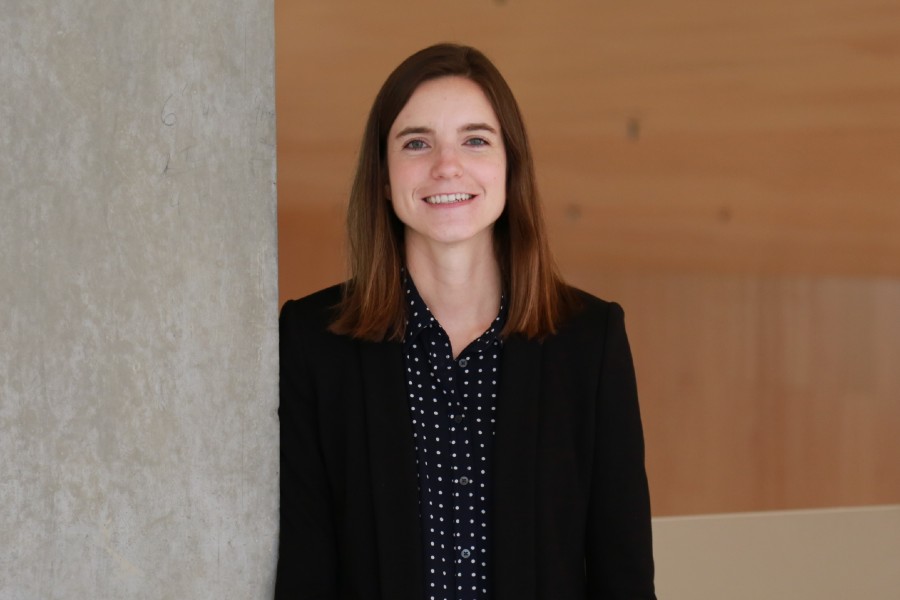The future of workplace collaboration has arrived early.
For those who can work remotely amid the COVID-19 pandemic, a new normal has arisen over the last month. In professions where intensive collaboration is the norm, such as in engineering, this poses new and unexpected challenges.
“Most people get to plan when they work from home. These are unusual times where it was quickly decided for most of us,” says Professor Alison Olechowski (MIE, ISTEP). Olechowski and her team study the ‘future of work’ as it relates to engineering design and manufacturing, seeking strategies to help engineering teams work effectively when designing new products.
Olechowski shared her tips for engineers navigating the challenges of working remotely with writer Liz Do.
What are some of the immediate challenges engineers and companies are facing in having to work remotely?
There are lots of challenges. On top of having to abruptly adapt to a new way of working and establish new team norms, there are also differences in attitudes towards adoption of technology. There might be lack of access to information or tools. Workers must also meet deadlines with reduced or absent face-to-face contact. And there are distractions at home for those with care-giver responsibilities.
A key feature of a strong design team is psychological safety, which means that individuals on the team are willing to take interpersonal risks. We’re used to establishing psychological safety through in-person interactions — when you shift to a virtual work environment, the way we establish norms has to shift too.
In your research, what approaches have you observed to be effective in overcoming the challenges of a virtual workplace?
We study design using Computer-Aided Design (CAD) software. CAD software has been an important tool in the engineers’ toolbox for some time now, and increasingly so, given its link to rapid prototyping and computer-numerical-control manufacturing.
We conduct experiments in our lab to emulate a virtual collaborative environment for designing using CAD, and my research shows that even when you are doing a design task in a computer-mediated way, interaction with another person results in higher levels of emotion. We think that this higher emotion leads to higher engagement and satisfaction, as has been proven in studies of pair programming.
A forthcoming paper that we authored with collaborators at the Massachusetts Institute of Technology (MIT) looks at the Slack messages sent by student engineering design teams. An interesting finding there is that stronger teams use more emojis when communicating! We think these emojis may fill that gap of non-verbal communication and may be a way in which teams build culture.
What happens when team members pair up?
We’ve studied different configurations of CAD user pairings — some where the pairs take turns being in control, and others where they share control. We find that taking turns in a “driver” and “navigator” role, as is convention in some configurations of pair programming, leads to high quality results. We think this makes sense — you’re benefiting from four eyes of quality control instead of just two!
So pair up, virtually. Commercial tools exist for improved engineering collaboration, such as Onshape for CAD, and Bitbucket for coding. Or you can pair a video call with a Google Doc or a Microsoft 365 real-time edit file.
You mentioned a challenge is the reduction or absence of face-to-face presence. Why is this so important in collaborative design work?
Non-verbal communication channels, such as body language and facial expressions, are lost in many virtual media, but are integral ways in which we send information and share understanding.
On top of this, research shows that displaying face time — being observed by others at work — leads to many positive outcomes for employees.
Conventionally, face time is a strong signal of employees’ commitment to their job, their team and their organization. This correlates to better performance appraisals, shorter time to promotion and higher pay. Virtual workers need to find ways other than conventional “face time” to signal this. So, when participating in a virtual meeting, turn that camera on.
How do you give feedback and problem-solve in a corporate setting when you can’t get together?
Psychological safety is important for problem solving and working through issues. If your team has this sense of trust, these conversations get a lot easier.
One way to build psychological safety is to make a point of seeking out the voices people on the team who don’t speak up, or may be different from the bulk of the team. On a psychologically safe team, members are comfortable being themselves, and there is no fear that they will be rejected or punished for speaking up.
Believe it or not, there’s a study that was done that shows that sharing an embarrassing story with your team can increase your creativity, compared to sharing a moment of pride, and that when a team leader is the sharer, the whole team is more prolific in its brainstorming.
So, can engineers still innovate products and make reliable decisions while working remotely?
Absolutely — a team could use a video call and virtual whiteboard to do conceptual design. They could do customer and user calls to refine their concepts. The team could then switch to collaborative CAD tools for detailed design. And then they could build digital and distributed rapid prototyped models for review.
What’s your advice to engineering professionals who are still struggling to adapt to this new normal?
I’d say to communicate with your boss and your employees about expectations. Everyone’s situation is different, and there are huge challenges related to work-family boundaries, so be easy on yourself, and set realistic productivity expectations.
Identify someone on your team who you’d be willing to work with synchronously and give a live collaboration session a try.




